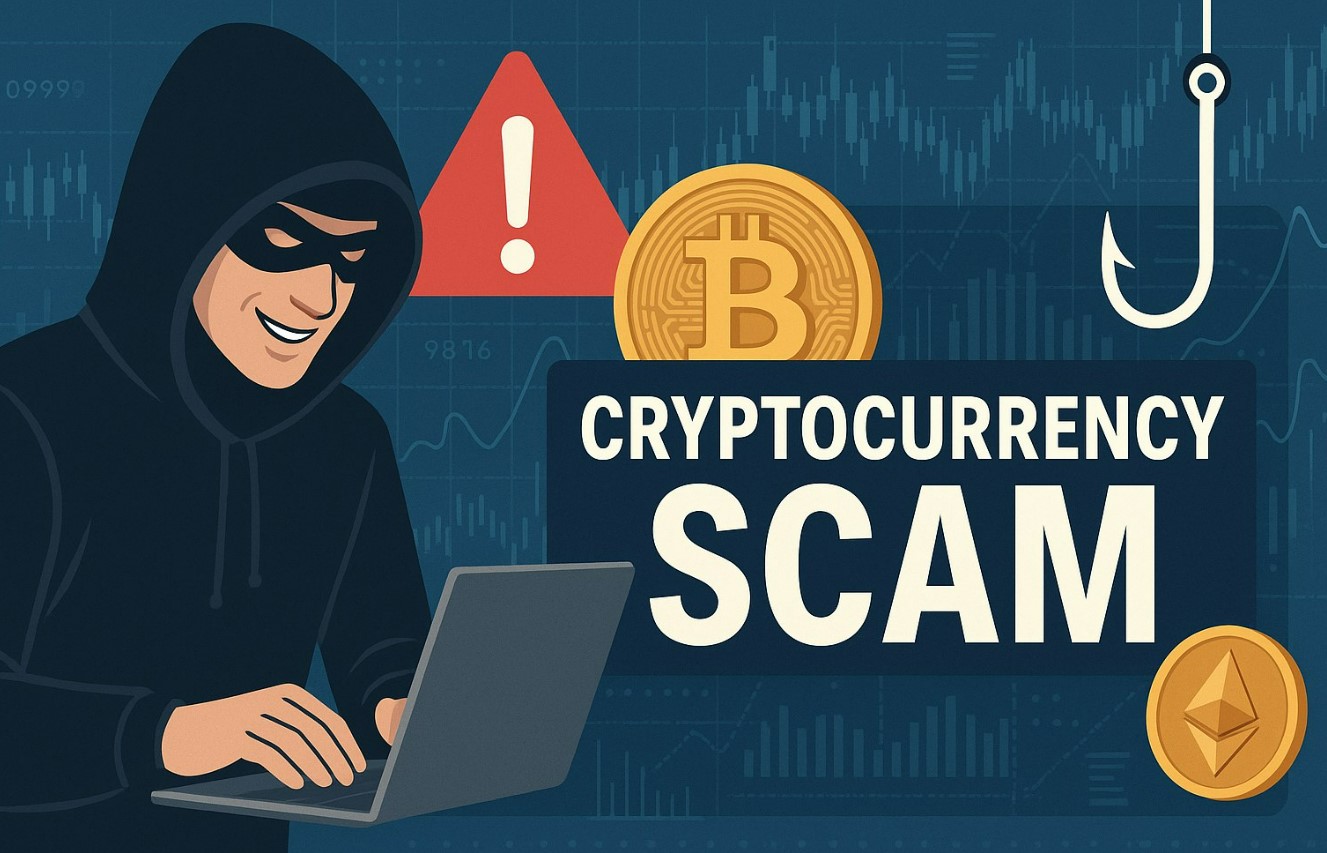TitanLTDInvestments.co Review -A Tricky Investment Broker
TitanLTDInvestments (operating under domains such as titanltdinvestments.co / .com) displays multiple characteristics that are typical of high-risk, unregulated, or fraudulent online brokers. Its public footprint, regulatory status, domain history, marketing claims, and patterns evident in independent reviews and watchdog lists collectively undermine its credibility. Treat the platform as high-risk and lacking the transparency and oversight expected of legitimate brokers.
Why this review matters
Investment platforms and retail brokers serve two critical functions: they move client funds and they represent fiduciary responsibilities. Because money entrusted to a broker is at stake, assessing legitimacy requires a close look not only at marketing and UI design but also at verifiable facts: who owns the business, where it is authorized to operate, whether proper regulatory records exist, and whether independent users and watchdogs report consistent, verifiable experiences. This review evaluates TitanLTDInvestments across those dimensions.
1) How TitanLTDInvestments presents itself
On the surface, TitanLTDInvestments markets itself like many retail trading platforms: claims of multi-asset trading (forex, CFDs, crypto), packaged account tiers, trading tools and charts, and marketing that emphasizes ease of trading and profit potential. The website layout, promotional banners, and “success story” language are designed to convey professionalism and trustworthiness.
That presentation strategy—professional design paired with bold return language—is common among both legitimate brokers and unscrupulous operators. What separates the two is verifiable substance. In Titan’s case, that substance is thin or contradictory.
2) Domain history, ownership transparency, and footprint
A reliable broker typically has an established domain history, clear corporate disclosures (company name, registration number, physical address), and a public track record. Titan’s domains are relatively recent and the public record shows limited longevity and transparency around ownership. Independent reviewer summaries note a short domain history and discrepancies between claimed corporate histories and observable registration dates.
Additionally, Titan lacks a consistent, verifiable corporate footprint in reputable business directories and financial registers. Where legitimate firms are easily found in registrar databases and regulator lists, Titan’s presence is mostly limited to its own sites and third-party review pages—which is a signal that it may be operating without proper disclosure.
3) Regulation and official oversight (the most important factor)
The single most critical test for any broker is whether it is licensed and supervised by recognized financial regulators in the markets it solicits. Multiple analyses and public regulator lists place TitanLTDInvestments on caution or enforcement tracking lists, and independent safety assessments warn that Titan is not regulated by top-tier authorities. In plain terms: Titan does not present verifiable licensing with recognized regulators, and watchdogs advise against trusting its regulatory claims. asc.ca+1
Lack of proper regulation means: no mandated client fund protections, no required segregation of assets, no official dispute-resolution pathway, no periodic external audits, and limited legal recourse for harmed investors. That absence alone elevates the platform to high-risk status.
4) Marketing claims vs. verifiable facts
Titan’s public marketing frequently uses language that implies reliability and scale—claims of global reach, multiple offices, or regulated status appear in various presentations. Independent investigations reveal that these claims do not match the verifiable public record. Where a firm claims oversight, prudent consumers should be able to confirm license numbers or regulator listings; for Titan, such confirmations are absent or contradicted by regulator watchlists and independent reviewer findings. TracingFrauds+1
Another common technique observed across suspicious brokers—and present here—is aggressive promotion of account tiers and deposit incentives while omitting clear, easily accessible information about withdrawal terms, fees, and risk disclosures. Ambiguity in these operational terms is a frequent prelude to deposit/withdrawal disputes.
5) Third-party reviews, trust scores, and contradictory signals
The public record around Titan contains mixed signals: some automated “trust score” aggregators produce middling results, while multiple broker review sites and consumer watchdog pages flag Titan as unlicensed or suspicious. In other words, automated scans of technical indicators (hosting reputation, SSL, basic site tech) may show few obvious red flags, but the human-facing checks—regulatory status and user reports—are strongly negative. That split is important: technical legitimacy does not equal regulatory or operational legitimacy.
Because technical evals can be gamed or are blunt instruments, they should never substitute for regulatory verification. The more reliable, load-bearing evidence in this case is the absence of regulator records and the presence of cautionary notes from reputable watchdogs.
6) Reported user experience: withdrawals, account management, and customer support
Patterns reported on independent review pages and forums align with familiar broker-scam behavior:
-
Pressure from sales/account representatives to deposit more funds and to upgrade account tiers.
-
Difficulty or delay when attempting to withdraw funds; requests for additional verification or unexpected “fees” appearing at withdrawal time.
-
Sparse or unhelpful customer support once money is deposited.
While isolated anecdotes must be treated carefully, the repetition of these specific complaints across independent sources is a meaningful signal and matches typical fraud playbooks.
7) Operational patterns that resemble scam networks
Certain infrastructural signs often accompany networks of fake or short-lived brokers: frequent domain changes, replication of website templates across different domain names, and appearance in consolidated lists maintained by regulators or interagency early-warning networks. Titan and related identifiers appear in multiple watchdog lists and review sites—consistent with the behavior of operators who spin up new domains to continue solicitations after older ones attract scrutiny. This operational churn is a practical problem for accountability and a red flag for consumers.
8) What a credible broker would provide (and how Titan compares)
To make the contrast explicit, a legitimate broker will typically provide:
-
A verifiable regulatory license number and a link to the regulator’s public register.
-
A clear corporate registration, physical headquarters, and named executives.
-
Transparent fee schedules, order execution policies, and withdrawal processes.
-
Third-party audit statements or bank-segregation confirmations for client funds.
-
A visible, long-standing presence in financial media and industry directories.
Titan, in public records and independent evaluations, does not meet these baseline criteria. That failure is the core reason it should be treated as high-risk.
9) Final assessment
When the pieces are assembled, the evidence points to the following professional assessment:
-
Transparency: Poor. Ownership and corporate credentials are not verifiably disclosed.
-
Regulation: Absent or unverified with recognized authorities—a decisive negative.
-
Operational behavior: Patterns match common high-risk/unregulated broker tactics (pressure to deposit, withdrawal problems, domain churn).
-
Overall credibility: Low. The platform should be considered a high-risk run by operators who have not established the standard proofs of legitimacy that regulated brokers present.
In short: TitanLTDInvestments does not present the verifiable hallmarks of a legitimate broker. The strongest, load-bearing red flags are missing regulation and consistent negative findings on independent review and watchdog lists.
10) Practical takeaways (informational, not recovery steps)
-
Verify regulation first: a credible broker will be trivially verifiable on regulator registers.
-
Treat modern, professional design as insufficient proof of legitimacy—look for outward, corroborated evidence (licenses, filings, audits).
-
Beware of pressure to deposit and incentives to upgrade account tiers without clear, verifiable policy documents.
-
Consider third-party watchdog lists and regulator caution lists as high-weight signals when they concur.
Closing statement
TitanLTDInvestments exhibits multiple, consistent indicators of a high-risk or likely fraudulent broker. The absence of verifiable regulatory registration, the presence of repeated user complaints and cautionary reviews, and the operational patterns commonly associated with abusive entities add up to a professional judgment that this platform is not credible. Consumers should prioritize transparency and regulatory verification when choosing an investment or trading partner.
Report TitanLTDInvestments.co Scam and Recover Your Funds
If you have lost money to QuaintFXMarket.com Scam, it’s important to take action immediately. Report the scam to Jayen-consulting.com, a trusted platform that assists victims in recovering their stolen funds. The sooner you act, the better your chances of reclaiming your money and holding these fraudsters accountable.
Scam brokers like QuaintFXMarket.com continue to target unsuspecting investors. Stay informed, avoid unregulated platforms, and report scams to protect yourself and others from financial fraud.
Stay smart. Stay safe.






